 |
|||
Georges Pichard Der französische Autor, Zeichner und Illustrator wurde am 17. Januar 1920 in Paris geboren, wo er auch am 7. Juni 2003 mit 83 Jahren verstarb. Georges Pichard hat mit seinen unzähligen Zeichnungen, Illustrationen und Geschichten das Genre des (erotischen) Erwachsenencomic im 20. Jahrhundert maßgeblich und stilprägend beeinflusst. Georges Pichard studierte an der l’École des Arts Appliqués in Paris und unterrichtete nach dem Krieg Grafik und angewandte Kunst an selbiger Hochschule. Zu seinen Schülern zählten unter anderem Marcel Gotlib und Annie Goetzinger. Vor dem Krieg arbeitete er für einige Agenturen wie Drager oder Ullman als Werbegrafiker. Nach Kriegsende griff er als Freiberufler diese Tätigkeit zwar wieder auf, war aber bereits zeitlich mit der Produktion von Illustrationen und Comics mehr als eingebunden. Pichard zeichnete für Magazine und Zeitschriften wie Librairie Hachette, Fou-Rire, Le Rire und La Veillée des chaumières - für letztere war er fast 30 Jahre als Illustrator tätig. Sein Comicdebut gelang 1956 mit "Miss Mimi" für das Magazin La Semaine de Suzette. Im selbigen Magazin erschienen in Folge weitere Serien wie "Pervenche", "Claudine" oder "XT1 Satellite"; die Pichard auch unter dem Pseudonym Sébastien anfertigte. 1964 begegnete ihm sein später langjähriger Autorenkollege Jacques Lob, mit dem er zu Beginn Parodien auf Superheldencomics entwickelte, wie die Kultcomic-Serie "Ténébrax" für das Magazin Chouchou von Jean-Claude Forest (Barbarella) oder zwei Jahre später "Submerman" für das bekannte Magazin Pilote. Etliche Folgen von "Submerman", die zwischen 1969 und 1970 in Pilote Premiere hatten, wurden jedoch nie in Sammelalben zusammengefasst. Einen ersten größeren Erfolg hatte das Duo Pichard und Lob mit dem recht frei interpretierten und mit futuristischen Elementen versehenen Homer-Stoff Ulysse. Das zur damaligen Zeit recht freizügige Werk entstand im Auftrag des Club Français du Livre und wurde zuerst nur in der italienischen Zeitschrift Linus veröffentlicht. 1969 wagte das französische Magazin Charlie den Abdruck und vier Jahre später war der Comic in der Fachzeitschrift Phènix zu finden (1). Dadurch bekam der Comic die intellektuellen Weihen und Verleger Pierre Lazareff veröffentlichte "Ulysse" in seiner Tageszeitung France Soir als Fortsetzungsgeschichte. 1967 war die Geburt der Reihe Blanche Epiphanie (auf deutsch "Brigitte", auf englisch "Candice", auf spanisch "Virginia"), die als Vorabdruck im V Magazin veröffentlicht wurde. Die Geschichte erzählt von einem jungen, unschuldigen Mädchen, das hilflos den Annäherungsversuchen des gemeinen Bankiers Adolphus und seiner sadistischen Mätresse Morena ausgesetzt ist. Pichard reihte hier geschickt ein Kitsch-Roman-Klischee an das nächste und überspitzte so die Handlung, um daraus eine herrlich unterhaltsame Parodie zu kreieren. Die Serie erschien in France Soir und Métal Hurlant, sowie als Album in Frankreich unter anderem bei Èdition Serg, Èdition Humanoïdes Associés und Èdition Dominique Leroy. In den folgenden Jahren entstanden Fortsetzungen wie "La Croisiére infernale", Blache á New-York" oder "Le cavalier noir". Autor von "Blanche Epiphanie" war wieder Jacques Lob. 1970 entstand gemeinsam mit Autor Georges Wolinski die Figur Paulette, die in ihren Vorzügen an die junge Brigitte Bardot erinnert. Das teilweise erotische Werk erschien in Frankreich zuerst im Magazin Charlie Mensuel und ein Jahr später in Albenform bei Èdition du Square. Die Geschichte um die junge und reiche Erbin Paulette setzt sich - in mit unter sehr sprunghaften Erzählabschnitten - unter anderem mit den Themen der damaligen Zeit auseinander; wie dem Vietnam-Krieg, der französischen Politik, Arbeiterkämpfen sowie den Umsturz der Hippiebewegung. Die besondere Stärke der Abenteuer Paulettes liegt in Wolinskis ironisch-gekonnter Travestie trivialer Gattungen. (2) Der 1986 in Frankreich erschienene Film Paulette, la pauvre petite milliardaire basiert auf der Geschichte von Wolinski. Wie die meisten seiner Künstler-Kollegen, war auch Pichard huldvoller Meister der weiblichen Formen und Rundungen. Seine Figuren besitzen eine fast barocke Ästhetik, mit vollen Brüsten, ausladenden Hüften und prachtvollen Hinterteilen. Seine meist barfüssigen Heldinnen müssen sich oftmals der Kehrseite der Sexualität stellen und geraten in Versklavung, Unterwerfung und Folter. Das zweiteilige Werk Marie-Gabrielle de Saint-Eutrope aus dem Jahr 1977 ist eine bildgewaltige Anklage gegen die im Namen der Religion verübten Verbrechen. Von der Ermordung der "Andersdenkenden", über das Ausleben ihres Hasses Frauen gegenüber (Folter und Verbrennungen während der Inquisition), bis hin zu den unsäglichen Leiden in vielen kirchlich geführten Einrichtungen (Heimen, Schulen, Erziehungs- und Besserungsanstalten), in denen das "Personal" ungehindert seinen sadistischen Neigungen frönen konnte. Ein Ansatz, der erschreckenderweise im Jahr 2010 immer noch recht aktuell ist. Pichard dazu: (frei übersetzt) "Ich wollte sehen, wie weit wir schon gehen können. … Die aufkommenden Freiheiten ausloten; auch in Bezug auf die religiösen Bilder und Anspielungen. Es gibt viele Arten von kirchlichen Verboten und die meisten sind oft sexueller Natur. … Ja, meine Bilder sind voller Gewalt, oftmals schwer zu akzeptieren; doch ich finde sie korrespondieren hervorragend mit den religiösen Texten, die ich verwendete. Veröffentlichte Texte von dubiosen Würdenträgern des späten 18ten bis Anfang des 20sten Jahrhunderts sind oft ziemlich überraschend." (3) Was die "120 Tage von Sodom" von Marquis de Sade für die Literatur war, ist "Marie-Gabrielle de Saint-Eutrope" für die Erwachsenen-Comic. "Die Geschichte der O" (1975) von Guido Crepax und "Marie-Gabrielle de Saint-Eutrope" (1977) von Georges Pichard sind wohl die bedeutendsten und wegweisendsten Veröffentlichungen im Bereich "Comic für Erwachsene" ihrer Zeit, wenn nicht sogar bis heute. Die Erstausgabe von Die Geschichte der O war sogar die teuerste, größte (im Folio-Format (Höhe 40-45 cm)) und aufwendigste Veröffentlichung (was Papier, Einband und Schuber betrifft) die es bei Comic-Alben je gab. "Marie-Gabrielle de Saint-Eutrope" wurde in Frankreich ebenfalls zu einer Augenweide für Sammler und Fans. Glénat verlegte das Album in aufwendigem Leineneinband und Goldprägung. Eine kleine Sensation, wenn man den skandalösen Inhalt des Werkes bedenkt. Es wird von einem Bibliothekar berichtet, der fast entlassen wurde, weil er das Werk für seine Bibliothek orderte. So ist es nicht verwunderlich, das in der noch recht (Comic-)prüden Zeit der 1970er und 1980er Jahre Pichards Werke in Frankreich, wie auch in Deutschland oftmals mit dem Gesetz in Konflikt kamen. Allerlei optische "Entgleisungen" und Obszönitäten wurden hierzulande meist als jugendgefährdend indiziert. Auch in der Geschichte L´Usine (Die Fabrik) - die 1978 im Magazin Circus vorveröffentlicht, und ein Jahr später in zwei Alben von Glénat zusammengefasst wurde - beschäftigt sich Pichard wieder "mit der Qual nackter Frauen"; "legitimiert" wie bereits bei "Marie-Gabrielle" durch eine sozialkritische Handlung. In "L `Usine" werden diebische Frauen zwecks Resozialisierung in die Fabrik des bestohlenen Monsieur Melchior gesperrt. Pichard hatte auch eine Schwäche für literarische Themen. Neben den Vorlagen La Comtesse rouge von Leopold von Sacher-Masoch, Germinal von Émile Zola, Les Sorcières de Thessalie von Lucius Apuleius und La religieuse von Denis Diderot, übertrug er auch "literarische" Figuren, wie Don Juan oder Carmen in die Comic-Dimension. Des Weiteren illustrierte er das berühmte Buch Kamasutra und Werke der Buchautoren Pierre Louÿs ("Trois filles de leur mère" (erschien seinerzeit als Luxus-Ausgabe)) und Gustave Flaubert ("Pierrot au Sérail"). Doch Pichard beließ es nicht bei einfachen Adaptionen der bestehenden Werke. Durch geschicktes Filtern und Transformieren der Texte und Handlungen, sowie Überhöhung und Veränderung entstand meist ein völlig neues Werk, ein "Pichard Werk". Oftmals abstruser und absurder in der Aussage, mit satirischen, komischen oder polemischen Akzenten versehen. 1987 veröffentlichte der Verlag Albin Michel von Pichard ein Sequel der bekannten Geschichte von Magnus Les 110 Pilules mit dem Titel "La Fleur du Lotus". 1988 kreierte Pichard die politisch-satirische Geschichte "Marlène et Jupiter", sowie "La Belle endormie" für das Yes Company Magazin J´ose. Letztere Geschichte wurde nach der Einstellung des Heftes leider nicht mehr beendet. Gerade in den späteren Werken verstärkte sich Pichards Auseinandersetzung mit (sexueller) Dominanz und Unterwerfung, (scheinheiliger) Religion, BDSM-Praktiken, der männlichen wie weiblichen Begierde und versuchte mit immer stärkeren Tabubrüchen die Grenzen der Gesellschaft auszuloten. In den 90er Jahren zeichnete Pichard etliches erotisches Material für die Edition CAP Magazine (IPM), wie zum Beispiel Bédé X und Bédé Adult. Darunter Titel wie "La Voie du repentir", "La Religieuse" oder "L'Enquêteuse". Im zweibändigen Werk Madoline (1992/1994) setzt Pichard die lüsterne Heldin in eine Welt, in der Frauen keine Rechte besitzen. Als Madolines Schwiegermutter keinen Erfolg erzielt, ihr mittels Züchtigung und Folter das schamlose Benehmen auszutreiben, schickt sie sie kurzerhand in eine staatliche Umerziehungseinrichtung. Trotz der vermeintlichen Gewalt, ist die Geschichte überaus lesenswert und unglaublich erotisch geworden, weil Pichard die Handlung mit seinem ihm eigenen sarkastisch, dunklen Humor und pointierten, politischen Texten raffiniert überhöht. In einer fast subversiven Art und Weise bringt Pichard den Leser dazu, durch seine unglaublich eindrucksvollen Bilder des menschlichen Verhaltens und der sexuellen Begierde, gleichzeitig entsetzt, amüsiert und erregt zu werden. Madoline ist bis heute ein erotisches Meisterwerk das seinem Schöpfer, einem "wahren Meister der (erotischen) Graphic Novel", gerecht wird. Der Zeichenstrich von Pichard unterlag im Laufe der Zeit natürlich etlichen Wandlungen. In seinen früheren Werken der 1960er/1970er Jahre waren die Figuren noch einfacher - meist in einem karikaturistisch überzeichneten, cartoonhaften Stil - gestaltet. Den typischen Pichard-Stil späterer Jahre - den unverwechselbaren "Look" seiner Figuren - konnte man jedoch bereits erkennen. Das Seiten-Layout war oftmals recht schwungvoll-verschlungen, mit viel Weißflächen und einfachen Strichen aufgebaut. Grautöne wurden meist mit gezeichneten (Punktier-)Mustern und Schraffierungen erzeugt. Eine Technik die Pichard vermehrt in den 1980er/1990er Jahren einsetzte. Sein Stil wurde dadurch strukturierter, komplexer und die Figuren bekamen mehr Tiefe und Details. Pichard: "Mein Stil ist vielleicht unverwechselbar, hat aber viele Schwächen. Zu Anfang ist es ganz normal, das man sich inspirieren lässt von anderen. Ich aber - eitel wie kein Zweiter - bin davon immer zurückgewichen. Leider war mein Stil mittelmäßig. Dann habe ich nach und nach versucht, ihn mit den mir zu Verfügung stehenden Mitteln zu verbessern. Das war nicht leicht." (4) Dieser schwarz/weiße "Grund"-Stil erinnert mit seiner akzentuierenden Schraffierung und Punktierung an Comickollegen wie Crepax, Corben oder Crumb. Gleichwohl ist Pichards Stil einzigartig und auf den ersten Blick wiedererkennbar. In erster Linie wohl durch seine markanten, robust, weiblichen Frauenfiguren mit ihren unverwechselbaren Gesichtern, ihrem starren Ausdruck und dem exzessiven Make-up, die ihnen ein stoisches, fast "teutonisches" Aussehen verleihen. Die theatralische Mimik und Körperhaltungen, der meisterliche Einsatz von Licht und Schatten, sowie die stimmigen Bildausschnitte und Seiten-Layouts verleihen den Werken von Pichard eine faszinierende, fesselnde Ästhetik, die an Bühnenstücke oder Opernaufführungen erinnern. So war Pichard mit seinem Zeichenstil geradezu prädestiniert die Oper Carmen in die Comicform zu versetzen. "Seine" leicht stoisch wirkende Hauptdarstellerin - kühl aber auch voller Leidenschaft - ist wohl eine der schönsten Interpretationen bis heute. Etliche Werke Pichards wurden in späteren Wiederveröffentlichungen koloriert, was einigen Titeln nicht zum Vorteil gereichte. Es ist ein wenig traurig das Georges Pichard, der Tausende von Comicseiten und Illustrationen anfertigte und unglaubliche Comicgeschichten schuf, nebenbei noch Professor von 1945 bis 1975 an der l’École des Arts Appliqués war und dort eine Vielzahl von heute bekannten Schülern und Talenten (Gotlib, Annie Goetzinger, Alain Bignon, Michel Rouge, David B., Joe G. Pinelli) (5) unterrichtete, heute nicht ausreichend gewürdigt wird. Das Schaffenswerk von Pichard ist gewaltig und kann an dieser Stelle nur in Auszügen gelistet werden. Was die Albenveröffentlichungen in Frankreich (und Deutschland) betrifft, ist die nachfolgende Zusammenstellung jedoch eine der Umfangreichsten, die man im Internet finden kann. Die Anzahl an Cover, Illustrationen und Zeichnungen ist dagegen unüberschaubar. Wie bei etlichen anderen Künstlern seiner Zeit, wurden auch die Comicseiten von Pichard in diversen (Verlags-)Magazinen vorveröffentlicht. Ein Großteil des Materials schaffte es in eine spätere Albenzusammenfassung; jedoch längst nicht alles. Alben-Veröffentlichungen/Publications (Frankreich/France) (6): Sekundärliteratur (Auswahl/Selection): Deutsche Alben-Veröffentlichungen (Auswahl/Selection): Links: Quellen/Sources: |
This translation is unedited!
George Pichard
The French author, artist and illustrator was born on 17. January 1920 in Paris, where he died on 7. June 2003 at the age of 83. Georges Pichard, with his innumerable drawings, illustrations and stories, has influenced the genre of (erotic) adult comics in the 20th century decisively and influenced the style.
Georges Pichard studied at the l' École des Arts Appliqués in Paris and after the war taught graphic arts and applied arts at the same university. His pupils included Marcel Gotlib and Annie Goetzinger. Prior to the war, he worked as a commercial artist for several agencies such as Drager and Ullman. After the end of the war, he resumed this activity as a freelancer, but was already more than involved in the production of illustrations and comics.
Pichard has worked as an illustrator for magazines and magazines such as Librairie Hachette, Fou-Rire, Le Rire and La Veillée des chaumières - for the latter he worked as an illustrator for almost 30 years.
His comicdebut came in 1956 with "Miss Mimi" for the magazine La Semaine de Suzette. In the same magazine appeared in series such as "Pervenche","Claudine" or "XT1 Satellite", which Pichard also produced under the pseudonym Sébastien.
In 1964 he met his later long-time colleague Jacques Lob, with whom he initially developed parodies on superhero comics, such as the cult comic series "Ténébrax" for the magazine Chouchou by Jean-Claude Forest (Barbarella) or two years later "Submerman" for the well-known magazine Pilote. However, several episodes of "Submerman", which premiered in Pilote between 1969 and 1970, were never grouped together in scrapbooks.
The duo Pichard and Lob had their first major success with the quite freely interpreted and futuristic Homer fabric Ulysse. The work, which was quite permissive at the time, was commissioned by the Club Français du Livre and was first published only in the Italian magazine Linus. In 1969, the French magazine Charlie dared to publish the comic book and four years later it was published in the trade journal Phènix (1). The comic strip thus received the intellectual consecrations and publisher Pierre Lazareff published "Ulysse" in his daily newspaper France Soir as a continuation story.
In 1967, the Blanche Epiphany series (in German "Brigitte", in English "Candice", in Spanish "Virginia") was born, which was published as a preprint in the V magazine. The story tells of a young, innocent girl who is helplessly exposed to the attempts of the common banker Adolphus and his sadistic mistress Morena. Pichard skillfully lined up one kitsch novel cliché after another and exaggerated the plot to create a wonderfully entertaining parody.
The series was released in France Soir and Métal Hurlant, as well as an album in France with Èdition Serg, Èdition Humanoïdes Associés and Èdition Dominique Leroy. In the following years, he created sequels such as "La Croisiére infernale","Blache á New-York" and "Le cavalier noir". The author of "Blanche Epiphany" was again Jacques Lob.
In 1970, the figure Paulette was created together with the author Georges Wolinski, which in its merits reminds us of the young Brigitte Bardot. The partly erotic work first appeared in France in the magazine Charlie Mensuel and a year later in album form at Èdition du Square. The story about the young and wealthy heiress Paulette deals with topics of the time, such as the Vietnam War, French politics, workers' struggles and the upheaval of the hippie movement, among other things. The particular strength of Paulettes adventures lies in Wolinski's ironic and skillful travesty of trivial genres. (2)
The film Paulette, la pauvre petite billionaire, released in France in 1986, is based on the story of Wolinski.
Like most of his fellow artists, Pichard was a master of feminine shapes and curves. His figures have an almost baroque aesthetic, with full breasts, sweeping hips and magnificent buttocks. His mostly barefoot heroines often have to face the flip side of sexuality and become enslaved, subjugated and tortured.
The two-part work Marie-Gabrielle de Saint-Eutrope from 1977 is a powerfully illustrated accusation against the crimes committed in the name of religion. From the assassination of the "dissenters", to the living out of their hatred towards women (torture and burning during the Inquisition), to the unspeakable suffering in many ecclesiastical institutions (homes, schools, preschools and correctional institutions) in which the "staff" could indulge their sadistic tendencies without hindrance. An approach that is still very much in vogue in 2010.
Pichard commented: "I wanted to see how far we could go. .... Exploring the emerging freedoms; also in relation to religious images and allusions. There are many types of church prohibitions and most of them are often of a sexual nature. .... Yes, my pictures are full of violence, often difficult to accept; but I think they correspond excellently with the religious texts I used. Published texts by dubious dignitaries of the late 18th to early 20th century are often quite surprising." (3)
What Marquis de Sade's "120 Days of Sodom" was for literature is "Marie-Gabrielle de Saint-Eutrope" for the adult comic.
The story of the "O" (1975) by Guido Crepax and "Marie-Gabrielle de Saint-Eutrope" (1977) by Georges Pichard are probably the most important and groundbreaking publications in the field of "Comic for Adults" of their time, if not even today.
The first edition of Die Geschichte der O was even the most expensive, largest (in folio format (height 40-45 cm)) and most elaborate release ever made on comic albums.
"Marie-Gabrielle de Saint-Eutrope" also became a feast for the eyes of collectors and fans in France. Glénat published the album in elaborate linen binding and gold embossing. A small sensation, considering the scandalous content of the work. A librarian, who was almost dismissed because he ordered the work for his library, is reported to have been there.
It is therefore not surprising that in the still quite (comic-)jewelled time of the 1970s and 1980s Pichard's works in France, as well as in Germany, often came into conflict with the law. All kinds of optical "derailments" and obscenities were in this country mostly indicated as dangerous for young people.
In the story L´Usine (The Factory) - which was previously published in 1978 in Circus magazine and one year later was grouped together in two albums by Glénat - Pichard again deals "with the agony of naked women"; "legitimizes" as already in "Marie-Gabrielle" through a socially critical plot. In "L' Usine", theft women are locked up for social rehabilitation in the factory of the robbed Monsieur Melchior.
Pichard also had a weakness for literary topics. In addition to the templates La Comtesse rouge by Leopold von Sacher-Masoch, Germinal by Émile Zola, Les Sorcières de Thessalie by Lucius Apuleius and La religieuse by Denis Diderot, he also transferred "literary" figures such as Don Juan or Carmen into the comic dimension. He also illustrated the famous book Kamasutra and works by the authors Pierre Louÿs ("Trois filles de leur mère" ("Trois filles de leur mère") and Gustave Flaubert ("Pierrot au Sérail").
But Pichard did not leave it at simple adaptations of the existing works. By cleverly filtering and transforming the texts and actions, as well as increasing and changing them, a completely new work, a "Pichard Work", was created. Often more absurd and absurd in the statement, with satirical, comical or polemical accents.
In 1987, Albin Michel von Pichard published a sequel to the famous story of Magnus Les 110 Pilules entitled "La Fleur du Lotus". In 1988, Pichard created the political-satirical story "Marlène et Jupiter"and "La Belle endormie" for the Yes Company magazine J´ose. Unfortunately, the latter story was not finished after the issue was closed.
In his later works in particular, Pichard's confrontation with (sexual) dominance and subjugation, (spiritual) religion, BDSM practices, male and female desires intensified and attempted to explore the limits of society with ever-increasing taboos.
In the 1990s, Pichard drew several erotic material for the CAP Magazine (IPM) edition, such as Bédé X and Bédé Adult. Among them titles like "La Voie du repentir", "La Religieuse" or "L' Enquêteuse".
In his two-volume work Madoline (1992/1994), Pichard places the lusty heroine in a world in which women have no rights. When Madoline's mother-in-law does not succeed in driving her out of shameless behaviour by punishment and torture, she sends her to a state reeducation institution. Despite the alleged violence, the story has become extremely worth reading and incredibly erotic, because Pichard exaggerates the plot with his own sarcastic, dark humor and pointed political texts. In an almost subversive way, Pichard makes the reader be shocked, amused and aroused by his incredibly impressive images of human behavior and sexual desire.
Madoline is still an erotic masterpiece that lives up to its creator, a "true master of the (erotic) Graphic Novel".
Pichard's style has undergone many transformations over time. In his earlier works of the 1960s/1970s, the figures were even simpler - mostly in a caricaturistically exaggerated, cartoon-like style. The typical Pichard style of later years - the unmistakable "look" of his figures - could already be recognized. The page layout was often quite swinging, with lots of white areas and simple lines. Grey tones were mostly created with drawn (dotted) patterns and hatchings. A technique that Pichard increasingly used in the 1980s/1990s. His style became more structured, more complex and the figures gained more depth and detail.
Pichard: "My style may be unmistakable, but it has many weaknesses. At the beginning, it's quite normal to be inspired by others. But I - vain as no other - have always retreated from it. Unfortunately, my style was mediocre. Then I tried to improve it with the means at my disposal. That wasn't easy." (4)
This black/white style with its accentuating hatching and dotting reminds of comic colleagues such as Crepax, Corben or Crumb.
Nevertheless, Pichard's style is unique and recognisable at first glance. First and foremost, his striking, robust, feminine female figures with their unmistakable faces, their rigid expression and the excessive make-up that give them a stoic, almost "teutonic" appearance. The theatrical facial expressions and postures, the masterly use of light and shadow, as well as the harmonious image sections and page layouts lend the works of Pichard a fascinating, captivating aesthetic that reminds us of stage plays or opera performances. Pichard's style of drawing was almost predestined to transport the opera Carmen into comic form. "His" slightly stoic-looking leading lady - cool but also full of passion - is probably one of the most beautiful interpretations to this day.
Many of Pichard's works were coloured in later re-releases, which was not to the advantage of some titles.
It is a little sad that Georges Pichard, who produced thousands of comic pages and illustrations and created incredible comic strip stories, was a professor at the l' École des Arts Appliqués from 1945 to 1975 and taught a large number of today's famous students and talents (Gotlib, Annie Goetzinger, Alain Bignon, Michel Rouge, David B., Joe G. Pinelli) (5), is not sufficiently appreciated today.
Pichard's work is enormous and can only be listed here in extracts. As far as album releases in France (and Germany) are concerned, however, the following compilation is one of the most extensive on the Internet. The number of covers, illustrations and drawings, on the other hand, is unmanageable. Like many other artists of his time, Pichard's comic pages were also published in various (publishing) magazines. Much of the material made it into a later album summary, but not everything. |
|||||||||
 |
||||||||||
 |
||||||||||
 |
||||||||||
 |
||
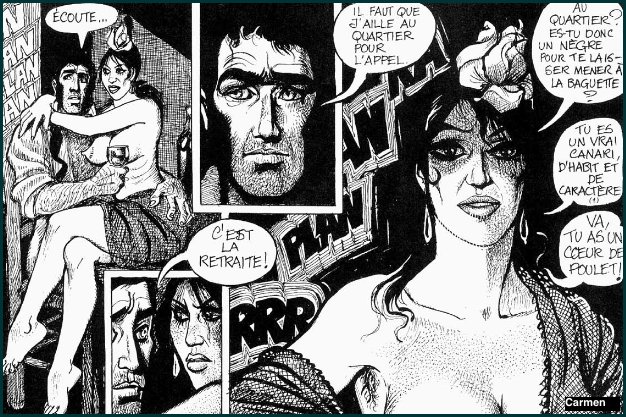 |
||
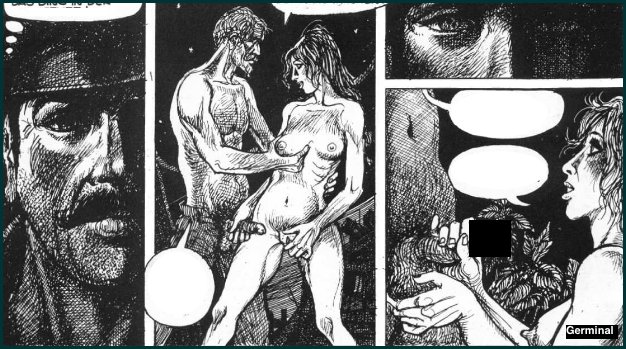 |
||
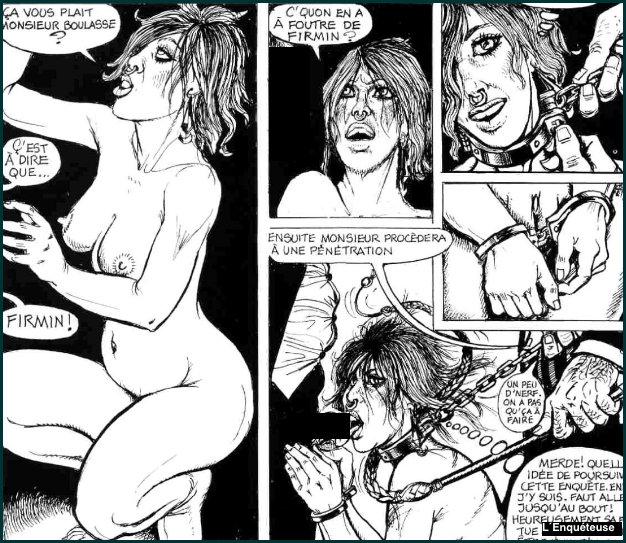 |
||
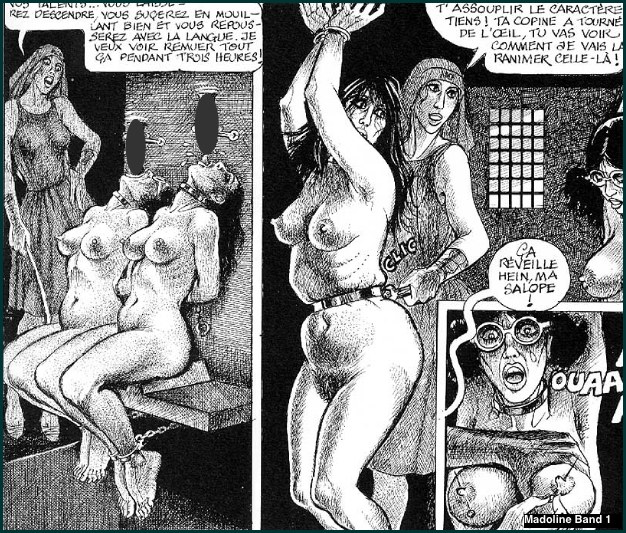 |
||
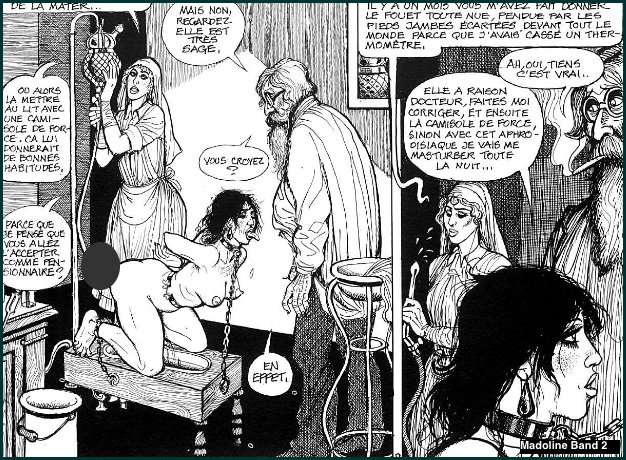 |
||
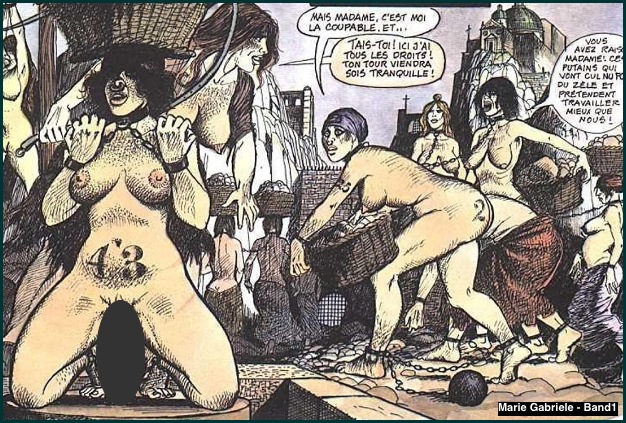 |
||
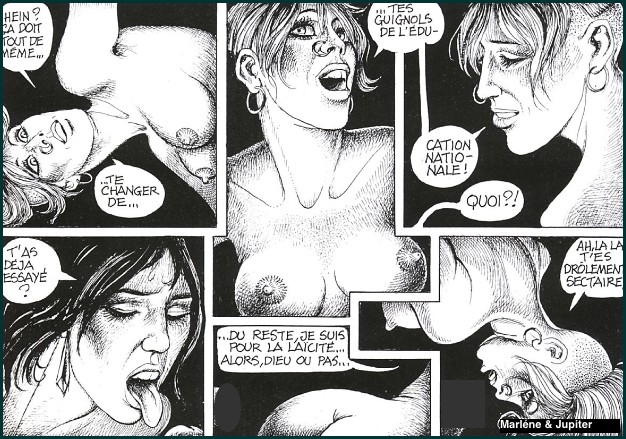 |
||
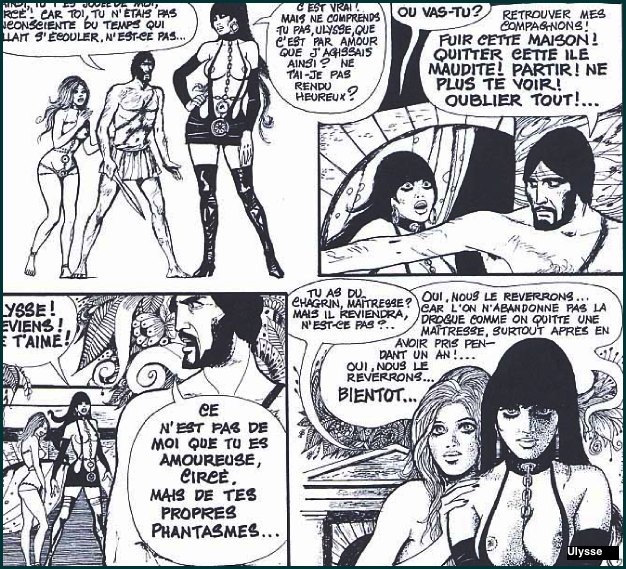 |
||
 |
||